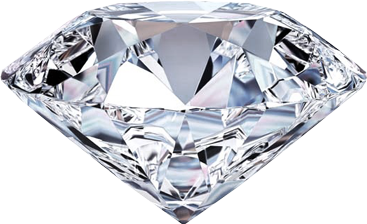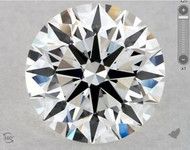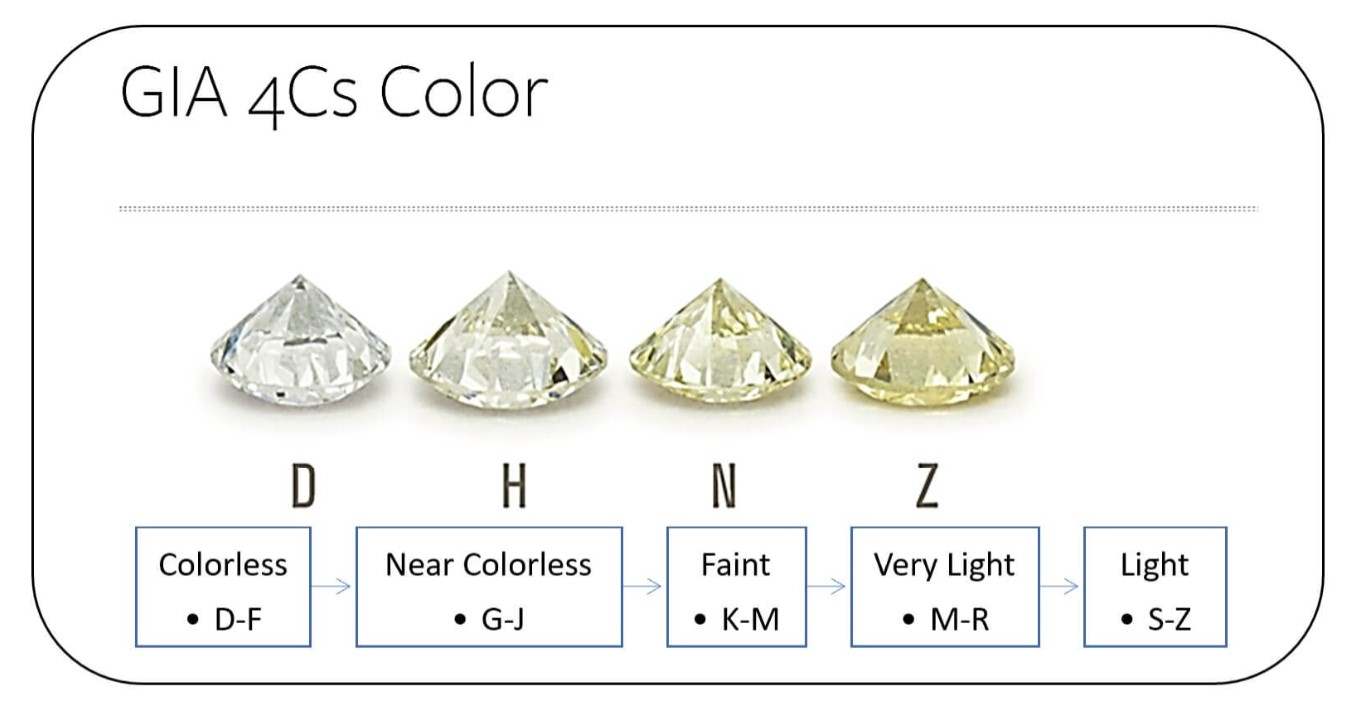Buying Loose GIA Certified Diamonds Online Cheap
Buying Loose GIA Certified Diamonds Online Cheap
Posted by Sharif Khan on 21st Nov 2022
Buying Loose Diamonds

Markups on loose GIA certified diamonds online are modest, often ranging from 10 to 20%, as opposed to local prices that can surge to over 100%. At the same time, understanding important quality factors and buying GIA certified diamonds online with a credible retailer is critical.
To help with the buying process, we have highlighted the best retailers below, complemented by comprehensive insights into shape, cut, clarity, color, certification, and fluorescence.
In short, search and shop loose GIA certified diamonds at our TOP-RATED RETAILER, renowned for pioneering high-definition video technology for viewing and inspecting diamonds. They also offer competitive pricing alongside unparalleled customer service. The company's commitment to long-term support further enhances its appeal.
With a robust decades-long presence in the diamond industry and a track record of trading diamonds valued at millions of dollars, we offer a wealth of experience. If you desire the assistance of a dedicated and knowledgeable diamond consultant to guide you through your choices, please contact us. We are here to help ensure your diamond buying experience is joyful and free of stress, especially for investment-grade GIA certified diamonds.
At a Glance
- GIA is one of the best grading labs in the world. When shopping for a loose diamond, make sure it comes with a GIA grading report.
- Be sure to learn more about cut proportions, color, clarity, and fluorescence below before making a final decision.
- Watch HD videos of GIA certified TRUE HEART and ASTOR IDEAL CUT diamonds.
Best Places for Buying GIA Certified Diamonds
We recommend the following five retailers for buying a GIA certified diamond:
We highly recommend James Allen as our favorite online retailer for loose GIA certified diamonds and engagement rings. James Allen is one of the largest diamond companies globally and has the best customer service in the industry. Not only do they offer a price match policy, they are also credited with transforming the diamond industry.
As one of our top retailers, Whiteflash is well-known for its precision cut ideal diamonds. Recently, they have also started offering lab-created ideal cut diamonds. Moreover, they offer designer engagement ring brands, including Tacori, Verragio, and A Jaffe. As a consistent BBB top award-winners for excellence in all categories, they are a top choice to consider. For further details, read our Whiteflash review.
If you want the trust and reliability of a strong brand, Blue Nile stands out as one of the best and pioneering brands in the industry. We deeply respect Blue Nile for its accomplishments over the last two decades. For further insights, read our Blue Nile review.
Brilliant Earth is a publicly traded fine jewelry company. They specialize in lab-grown diamonds and prioritize sustainability and ethical sourcing as their primary concerns. However, diamonds sourced by our other top vendors are also ethically mined and/or grown. Learn more about lab vs. natural diamonds, and check our Brilliant Earth review for further details.
Brian Gavin Diamonds presents an excellent option, particularly if you seek an ideal cut diamond and have previously considered Whiteflash. Renowned in the diamond industry, Brian Gavin's name is synonymous with the advancement of round shape diamond cuts, notably as the creator of the Hearts & Arrows diamond. Notably, Brian Gavin carries the legacy of being a fifth-generation diamond cutter. To learn more, check our Brain Gavin Diamonds review.
Loose GIA Certified Diamonds Quality Factors
A diamond's shape, weight, Cut, clarity, color, certification, and fluorescence are all crucial factors to consider when buying a diamond. As such, we have provided a summary of key insights buyers should consider under each of these critical factors.
Factor 1: Diamond Shape
|
|
The "shape" is how the diamond looks, and the "cut" refers to the quality of the craftsmanship while cutting a diamond into a particular shape, e.g., a round cut or an oval cut. A diamond's shape impacts its price because certain shapes might require larger unpolished stones. For example, a round shaped diamond is 20-30% more expensive than a princess cut or cushion cut diamond.
It could take a 2 carat rough diamond to cut a perfect 1 carat round brilliant cut, while it might take a 1.5 carat rough diamond to cut a princess cut diamond [a round 1 carat diamond is usually 6.5mm in diameter, and a 1 carat princess cut is roughly 5.5mm]. As a result of the size difference, round cut diamonds are priced higher than other shapes. |
Factor 2: Diamond Carat Weight
After determining the shape of a diamond, the next step is to learn about the carat weight of a diamond. Typically, a diamond is weighed in carats, and each carat is 200 milligrams or 0.2 grams. The price of a diamond increases significantly as it reaches a full carat. Once a diamond reaches the 2 or carat range, the price is multiplied by many times because larger stones are rare and, therefore, more expensive. For instance, if all other factors are considered equal, a 2 carat diamond will cost three to four times the price of a 1 carat diamond. This is because a 2 carat diamond is more scarce or rare to mine than a 1 carat diamond.
Tip: If you want to save money, buying a 1.9 carat diamond may be less expensive than a full 2 carat diamond. The price jumps significantly once the diamond reaches a full carat range.
Factor 3: Diamond Cut

The cut of a diamond is essential because it is the only C determined by a cutter and not nature. The cut of a diamond is complex, and several factors must be considered while evaluating a diamond's cut quality. GIA only assigns a cut grade to round diamonds and does not yet have a standard grading system for fancy cut stones such as a princess cut.
The good news is that we have published detailed articles about each shape and how to assess its cut. For example, check our guide on oval cut diamonds.
Tip 1: Even among GIA excellent cut round diamonds, there is a way to differentiate between an excellent cut diamond and what we refer to as an "ideal supercut" diamond. The best way to distinguish between them is by thoroughly analyzing the cut proportions of the diamond (read our article on ideal cut proportions).
Tip 2: In both round and fancy cut diamonds, the depth and table are the most important factors in determining the quality of the cut, followed by the size of the girdle, culet, crown angle, and pavilion. Length-to-width ratios are also important in fancy shape stones.
Tip 3: Dealers tend to cut a diamond deep to save the original rough stone. It is best to avoid a diamond with a large depth. A large table is also not recommended because it will lack optimal fire and brilliance.
Factor 4: Diamond Color
Color in diamonds is the second most important C after the cut of a diamond, as the whole body of a stone is affected by it, not a particular spot, as is often the case with clarity.
Color refers to a yellowish hue or tint in a white diamond and is graded from grade D (colorless) to grade Z (light yellow). D to F color grades are considered colorless, G to J are near colorless (however, there is a big difference between G and J color), K to M grades are faint yellow, N to R are very light yellow, and S to Z grades are light yellow.
Tip: We recommend D, E, F, and G as excellent color ranges. H and I diamonds are also excellent budget options, with J being our lowest recommendation unless some yellowish tint is preferred in a diamond.
Factor 5: Diamond Clarity
The clarity of a diamond is important because it directly affects its brilliance. If a diamond is full of inclusions, the stone will not sparkle and will lack luster, fire, and scintillation.
The diamond industry has developed a sophisticated system for grading the clarity of a diamond, ranging from Flawless (FL) as the highest grade and Included 3 (I3) as the lowest grade.
FL and IF (Internally Flawless) are excellent grades. Very Very Slightly Included 1 (VVS1) and Very Slightly Included 2 (VVS2) are almost flawless clarity grades. VS1 and VS2 are after VVS2 and are often considered eye-clean diamonds. Slightly Included 1 (SI1) and Slightly Included 2 (SI2) are at the lower end of high-quality diamonds and are close to being eye-clean in diamonds under 1 carat. Included 1 (I1) and Included 3 (I3) are the lowest clarity grades.
Tip: FL, IF, and VVS/VS1 are excellent premium grade diamonds. VS2 is a good option to consider while prioritizing quality and budget. SI1 and SI2 need extensive due diligence in the above 1 carat diamonds to avoid inclusions that might affect a diamond's brilliance.
Factor 6: Diamond Fluorescence
Fluorescence is an invisible glow that a diamond emits when placed under ultraviolet rays. It ranges from None to Very Strong Blue with Faint, Medium Blue, and Strong Blue as the other ranges.
According to a GIA study, the appearance of around 10% of diamonds was negatively affected among all diamonds that emitted fluorescence. Fluorescence can negatively influence the price of a diamond by up to 25%.
In summary, it is important to note that fluorescence can be a helpful factor for buyers on a tight budget. It can make H or lower color grade diamonds look whiter because fluorescence is often blue, a complementary color to yellow.
Tip: Fluorescence can be a plus in H and lower color grade diamonds. However, no fluorescence is always much better in higher color grades such as D to G. If you go with fluorescence in D to G colors, make sure you have a valid return policy in case the diamond is among the 10% of stones badly affected by fluorescence.
Factor 7: Diamond Certification
While it is commonly referred to as "diamond certification," within the diamond industry, we refer to the "certificates" as grading reports. Among the many labs that offer grading services, the best lab is GIA (the Gemological Institute of America), a non-profit organization dedicated to educating customers about diamonds and other gemstones.
Tip: We strongly encourage shoppers to buy a diamond with a GIA grading report to avoid getting riffed off. If a dealer offers a good deal on a stone graded by a bogus lab or not graded at all, there is a strong reason to be concerned.
4Cs in GIA Certified Diamonds
A balanced approach to buying diamonds is recommended, which entails prioritizing the best of all 4Cs and fluorescence in a diamond within a given budget range. While carat weight is important, the quality of the cut should always be prioritized. Color and clarity are also important factors.
A balanced approach implies that buying a well cut 2 carat diamond with higher clarity and color grade might be a better option compared to buying a 3 carat SI2, J color diamond.
Four scenarios to consider:
Buyers often pick one of the following four scenarios when prioritizing the 4Cs.
- Best Quality Scenario: Buy a diamond in the investment grade range that is very high in all four Cs.
- Best Value Scenario: Buy a high-quality diamond that is also big. For example, excellent cut GIA graded round diamonds in the 2 carat range, E-G color, VVS/VS clarity, and no fluorescence hold excellent value if bought at the right price.
- Best Carat Weight Scenario: Buy a budget option that is still eye-clean, such as a diamond with H/I color and SI1 clarity.
- Best Budget Scenario: Compromise on color and buy a big diamond with high clarity and a great cut. A good example would be a 2 carat diamond with a L color, VVS2 clarity, and ideal cut.
In short, no one-size-fits-all approach can be applied to diamonds because they are wonders of nature, each unique with its own characteristics.
Evaluating GIA Grading Reports
In addition to the 4Cs, buyers should pay attention to the following key elements in a GIA grading report:
Measurements: This shows the surface size of the diamond (how big the diamond is).
Proportions: An exact calculation of the diamond's cut quality. See our recommended ideal cut proportions for reference.
Fluorescence: More like the 5th C that should not be ignored.
Comments: It will show if the diamond is enhanced or treated and offer other important details.
Clarity Plot: An exact outline of where the inclusions in a diamond are located and their types (it helps avoid bad inclusions and ones located right on the table at the center of the diamond).

Watch the HD VIDEO of this Diamond.
GIA Certification & Trade Digitization
The diamond industry has evolved and changed significantly over the last two decades due to technological developments. While traditional brick-and-mortar retailers are unhappy about how the trade has evolved, the change significantly favors consumers.
How? Online competition and the standardization of the diamond grading system have brought transparency into the industry. In addition, there was no universal standard for grading diamonds, and now the industry has established a universal language and grading system, famously known as the 4Cs.
Before these developments, buyers were at the mercy of local dealers for price and quality verification. However, now buyers can easily review diamond prices on three to four websites to determine a competitive price range. For example, a buyer can easily establish a competitive price for a 1 carat round diamond with G color and VSS clarity and an excellent cut with no fluorescence.
As far as grading is concerned, as long as a stone is graded or "certified" by GIA, there is no reason to be concerned if the stone is actually what it should be because GIA is one of the most consistent grading labs in the world.
GIA Certified Diamond Prices
Petra Gems regularly analyzes the prices of diamonds and provides a comprehensive average estimation of diamond prices in our index. These prices fluctuate monthly, and we update our index as soon as a significant fluctuation is observed.
Besides the above quality factors, a number of other factors also influence diamond prices, including market demand and supply and macroeconomic conditions. The availability and supply of rough diamonds from large diamond companies, like De Beers and Alrosa, and trade regulations on import and export are also primary factors.
Final Thoughts
Based on the insights of this guide, buyers should be able to confidently select a GIA certified diamond at a competitive price within a given budget range. Moreover, buyers will appreciate the importance of buying a GIA graded diamond. In conclusion, we advise buyers to educate themselves on the basics of the 4Cs and other quality factors discussed in this guide and compare diamond prices on multiple websites before making a final decision on a substantial purchase.Natural diamonds are formed in high temperature and high-pressure conditions 100 miles below the earth's surface. It is the only gem made of a single element: carbon. Diamonds are billions of years old, and of all the diamonds mined, less than 20% are considered gem quality per the Gemological Institute of America (GIA).
Buying loose diamonds online can be a safe and pleasant experience if you know what you are looking for and shop with a trusted vendor. Markups online on loose certified diamonds are as low as 10-20% compared to local retailers. Markups can go as high as 150%+ locally.
In a nutshell, James Allen is our number 1 pick for buying loose GIA certified diamonds and engagement rings. The company is a pioneer in developing the ideal technology for showcasing diamonds in super HD videos. They also offer the most competitive prices and have unmatched customer service. The long-term benefits and support are also a great add-on.
If you are interested in lab-grown diamonds, compare James Allen against Brilliant Earth and Blue Nile. On the premium side, check out Whiteflash for precision-cut AGS certified loose diamonds. Here is our complete list of the best places to buy diamonds.






